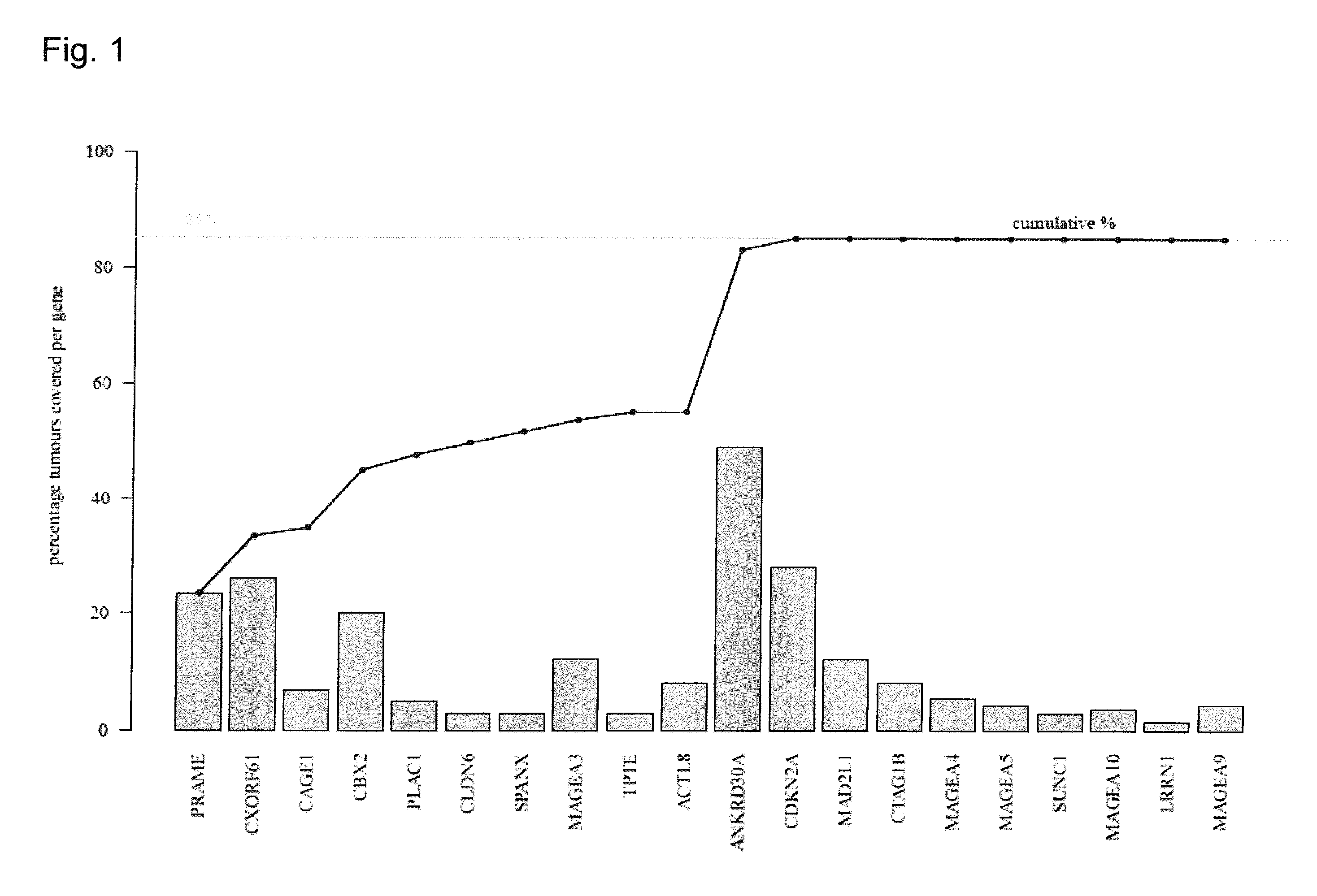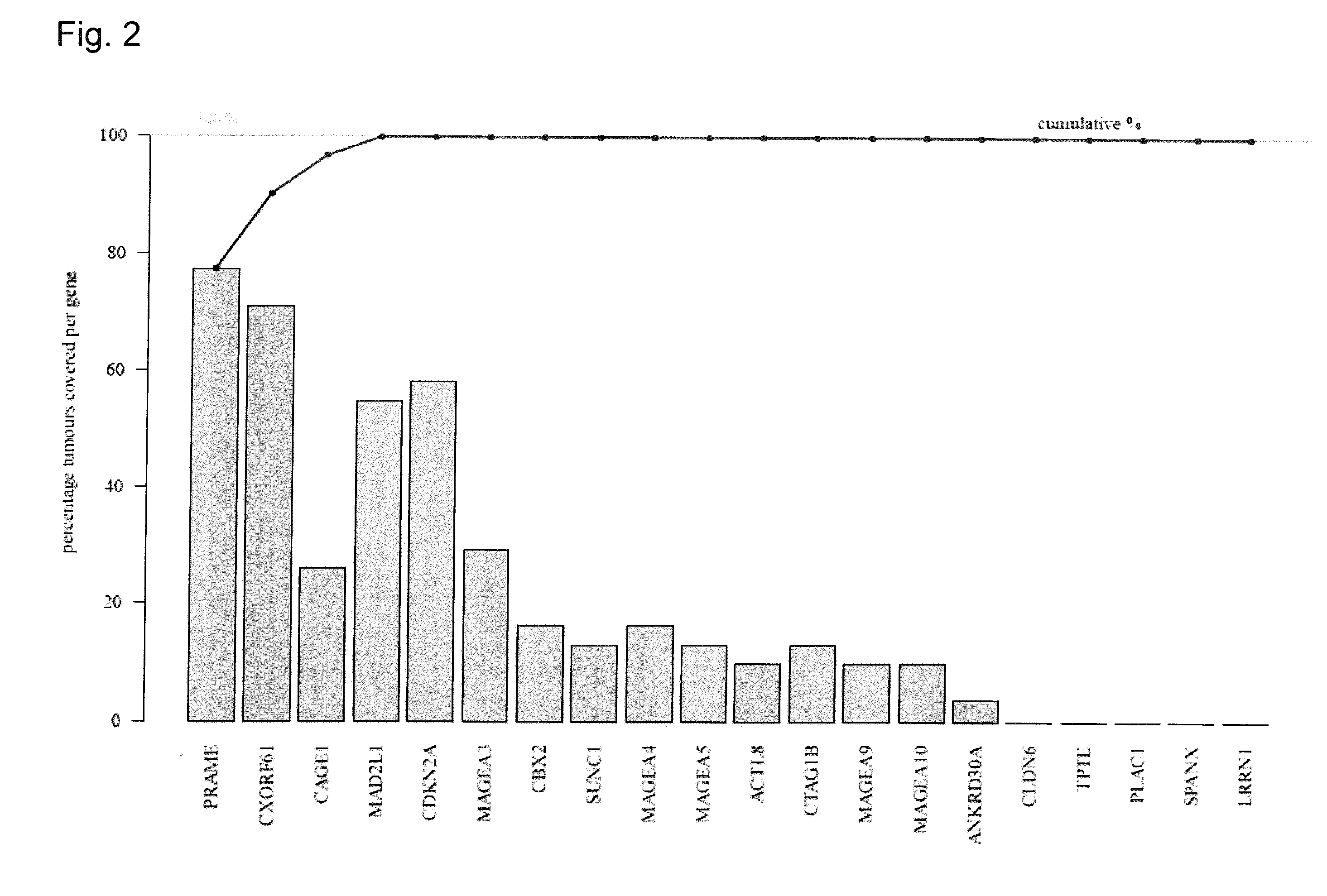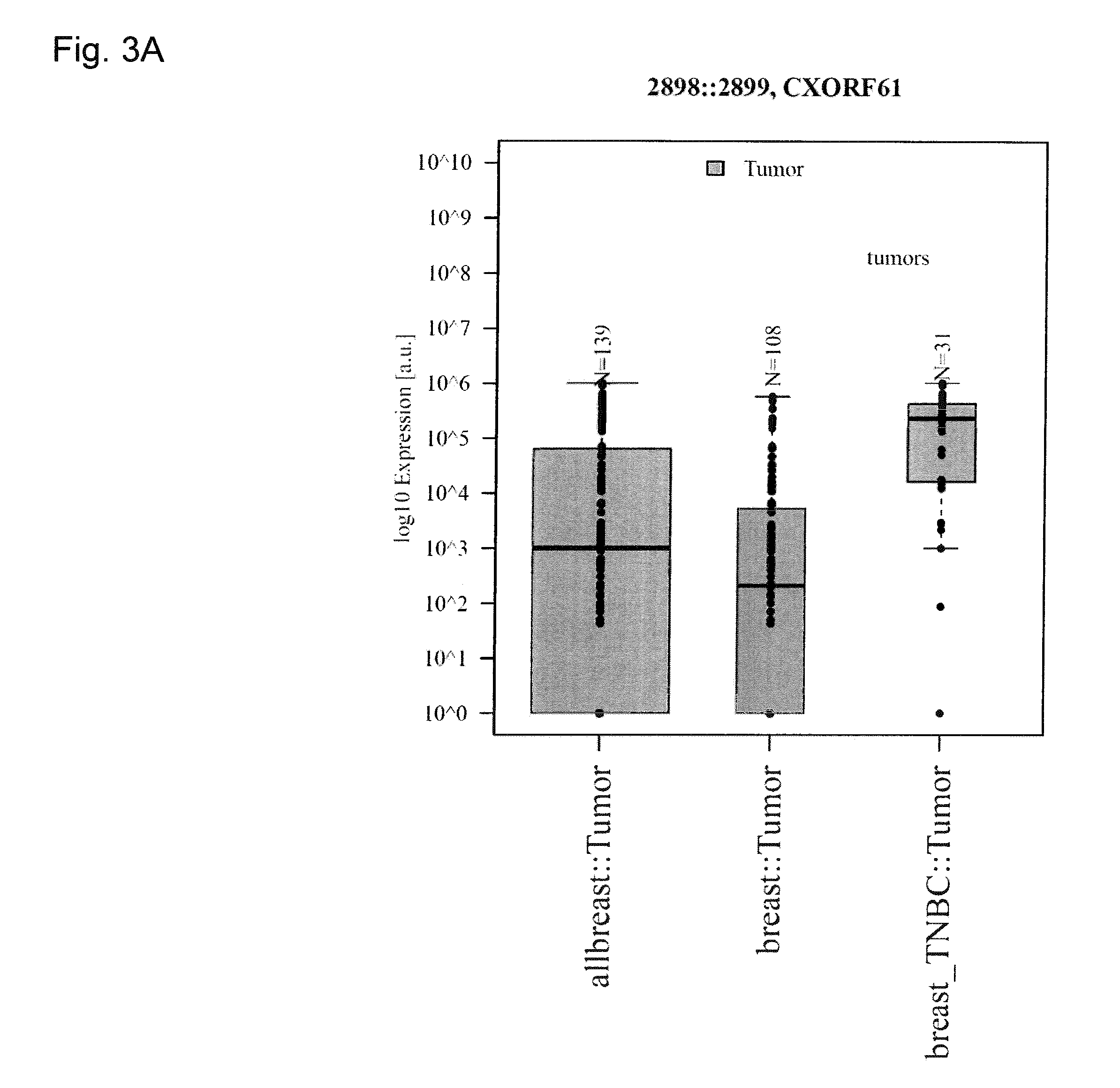Tumor antigens for determining cancer therapy
a technology of tumor antigens and cancer therapy, applied in the field of breast cancer and triple negative breast cancer, can solve the problems of ineffective inhibition of premenopausal women's aromatase, damage to fast-growing normal cells, and only suitable post-menopausal patients, so as to reduce the risk of cancer ons
- Summary
- Abstract
- Description
- Claims
- Application Information
AI Technical Summary
Benefits of technology
Problems solved by technology
Method used
Image
Examples
example 1
Establishing a Set of Tumor Antigens Useful in a Large Fraction of Cancer Patients
[0317]It was assessed whether it is possible to establish a set of tumor antigens which is shared at least partially by a large fraction of tumor patients and on the basis of which a set of vaccine products applicable to a broad spectrum of cancer patients can be provided.
[0318]To this end, RNA was extracted from normal tissues or breast cancer samples using the RNeasy Lipid Tissue Mini Kit (Qiagen). cDNA synthesis was performed using the SuperScript II Reverse Transcriptase Kit (Invitrogen) and oligo-dT. Expression was analysed using the BioMark™ HD System system (Fluidigm) and the relative expression was calculated using HPRT as house keeping gene.
[0319]In this manner, the relative expression of several genes could be detected. The % of positive samples, using a threshold of relative expression of 30000, changed depending on whether all breast cancer samples, irrespectively of the subtype (n=35), wer...
example 2
Analysis of Tumor Specificity of CXORF61, CAGE1 and PRAME
[0321]The tumor specificity of the three transcripts was analysed by qRT-PCR in a large set of normal tissues (n=65). As shown in FIG. 5, high expression (>30.000) of CXORF61 was detectable only in testis, high expression of PRAME was detectable in testis, endometrium and epididymis. CAGE1 shows only weak expression in testis. In contrast, Erbb2, a generally accepted target for vaccination and other immunotherapeutic approaches, shows a high expression in several normal tissues.
example 3
T Cell Epitopes of CXORF61, CAGE1 and PRAME
[0322]For CXORF61, TCR epitopes were identified by ex-vivo reactivity, analyzed by IFNγ-ELISPOT assay, of spleen cells from CXORF6 immunized HLA-A*02-transgenic mice against CXORF61-derived peptides. To this end, HLA-A*02 binding peptides derived from CXORF61 were predicted applying the SYFPEITHY algorithm (FIG. 6A). Spleen cells were analyzed for reactivity against CXORF61 peptide pool or predicted HLA-A*02-binding CXORF61-derived peptides A2-1-6 (FIG. 6B). Positive control: PMA-treated spleen cells; negative control: an irrelevant peptide pool (HIV-gag), irrelevant nonamer peptide (PLAC1-31-39). Two A2-restricted epitopes were identified (peptide A2-2 and A2-4).
[0323]After isolation of TCRs from CD8+ T cells of CXORF61-immunized mice, CD8+ T cells of a HLA-A*02-positive healthy donor were transfected with TCR-α / β chain RNAs and tested by IFNγ-ELISPOT assay for recognition of K562-A2 cells transfected with CXORF61 RNA or pulsed with CXORF6...
PUM
| Property | Measurement | Unit |
|---|---|---|
| nucleic acid | aaaaa | aaaaa |
| Northern blot | aaaaa | aaaaa |
| length | aaaaa | aaaaa |
Abstract
Description
Claims
Application Information
 Login to View More
Login to View More - R&D
- Intellectual Property
- Life Sciences
- Materials
- Tech Scout
- Unparalleled Data Quality
- Higher Quality Content
- 60% Fewer Hallucinations
Browse by: Latest US Patents, China's latest patents, Technical Efficacy Thesaurus, Application Domain, Technology Topic, Popular Technical Reports.
© 2025 PatSnap. All rights reserved.Legal|Privacy policy|Modern Slavery Act Transparency Statement|Sitemap|About US| Contact US: help@patsnap.com



